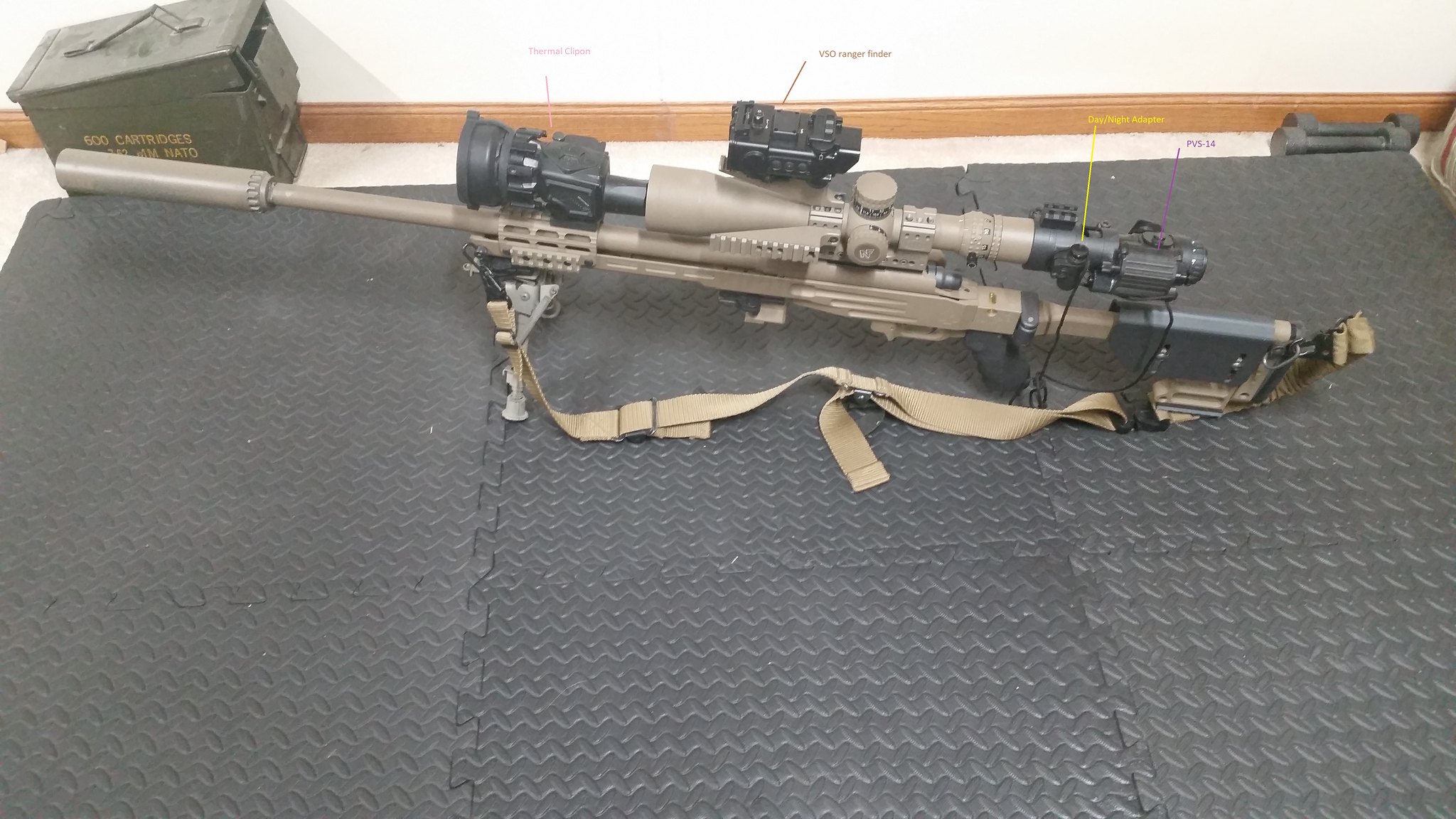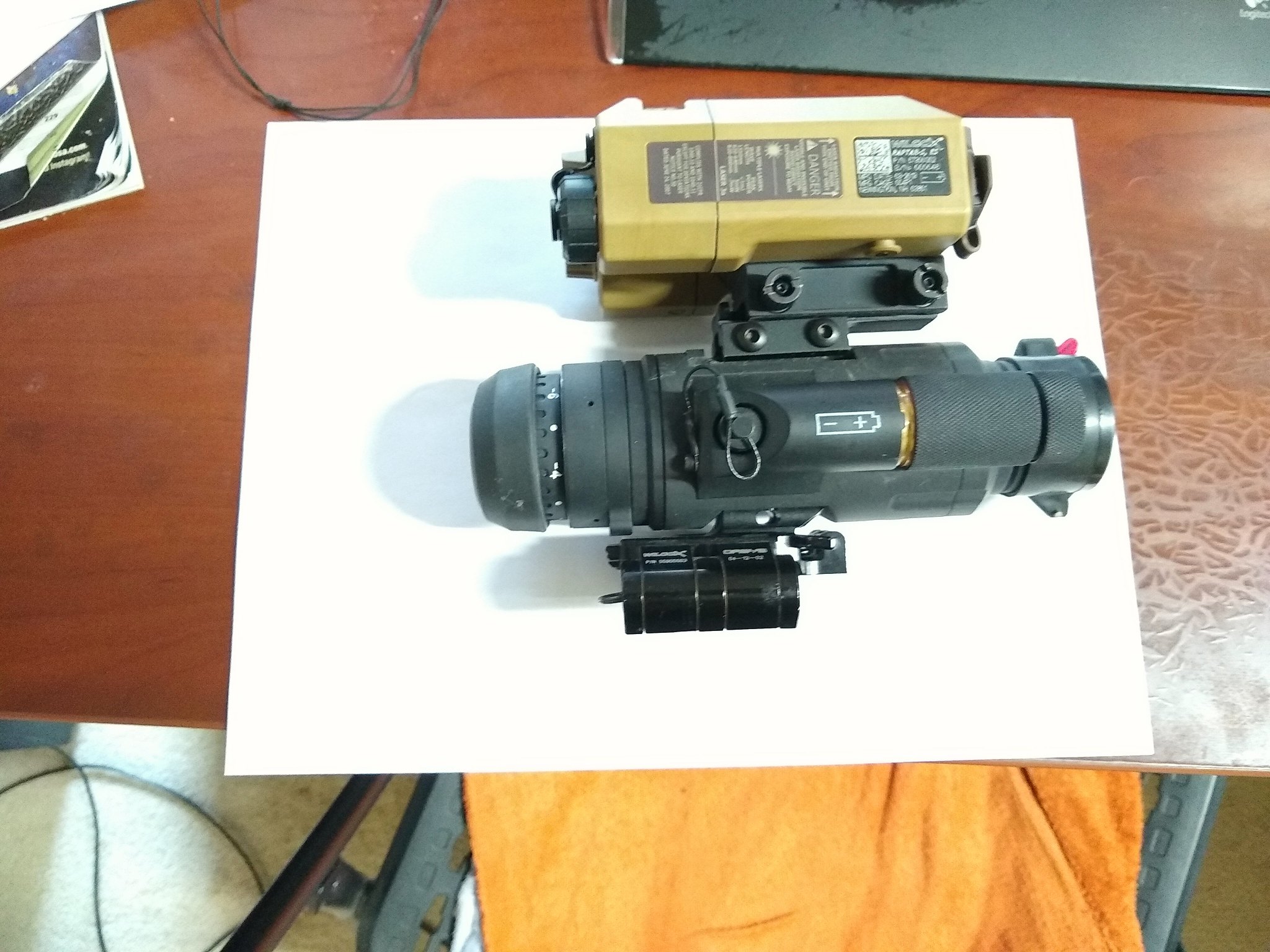One morning in January (several years ago) I was testing a halo-xrf, as N-Vision had sent me one to test due to 27 reports of similar behavior to OP in previous 30 days (zero for the 2 years before).
Conditions this morning were 7F and "frozen mist". I'd never seen frozen mist before, but it was white and hanging in the air, just like regular mist, except bright white, not "grey". So as "other control" devices I also had a lieca 3500 handheld LRF and an olde chinese bushy arc 1600 elite handheld LRF. From the position I choose, which was top of a 1300 foot hill with elevations ranging from 1500 to the West, 1300 to the East and 1200 to the N and 1400 to the S ... I tried to range vegetation with the XRF first, and no matter which way I pointed it, I got 11-13 yds. Even if I pointed it straight up in the air ! In these types of conditions in rural area I range a lot on evergreens (it was January with snow on the ground) as for whatever reason they are more likely to give a return.
With the XRF, again, I got 11-13 yds, no matter what.
With the Lieca on evergreens I could get up to 347yds, but no farther.
With the bushy on evergreens I could get up to 709yds, but no farther.
So on this day, it was definitely "bottom rail on top" with the 6 year old $350 to my door chinese Bushy beating out the $1k portuguese lieca and the $9k xrf (with chinese 600-1100 XRF).
The further testing on different days (and even later the same day when the frozen mist burned off) revealed zero issues with any of the range finders, and subsequently the lieca was top dog, then the xrf, then the bushy. But in frozen mist, in that spot, on that day, the results were as indicated.
In general, range finders don't like too much "water in the air" and performance will degrade under daylight conditions (more reflective objects in the LOS) and when "water is in the air".
But that wasn't the full story in this case. The rest of this story was that 30 days prior, the hardware manufacturer had (unbeknownst to N-Vision) sent them a "new improved" batch of LRFs. These LRFs put out a stronger, more focused signal. The sensor that receives these signals on the LRF was thus getting more returns off objects, that it previously would have - like frozen mist particles in t he air ! By adjusting downward, ever so slightly, the sensitivity of the LRF sensor, the problem could be adjusted and eliminated and it was. That said, mother nature can always concoct conditions that will foil the best range finder. I've still never seen frozen mist at any other time than that morning and never had another issue with the XRF ranging.
All that said, for years (since 2014) I've been using WMLRFs (Weapons Mounted LRFs). That way, I can move them around separately from the thermals and get the results I want where, when I want them. Also, integrated solutions invariably come up short vs "best of breed" solutions. This is just a general truth on this planet.
==
This was a setup I used back around 2016 for testing a belgian (IRnD) vampire solo range finder.
It was a 905nm critter, but fired a large (1000 ish per second) burst of ranging pulses and averaged the results. Euro Optic was selling them for a while. Jason wanted me to try it instead of the Raptar S/ES I was asking for and said he would back me up if there were any issues. The range finder was actually GREAT and their product support guy (back in Belgium) got on line with me on whatsapp to answer questions (we had to dive down into the factory settings to make a few changes). But after about 2 months I broke the power button and had to send it back. After six months, Belgium said it was long fixed, but they were unable to figure out how to reexport it. So, Jason wound up getting me an S/ES instead.
The 14 on the rear was for adjusting the co-witnessing laser to the day scope reticle, The UTCx thermal clipon was removed when doing that. But when I carried the gear outside, I had it all mounted on the gun. If you were wondering how a setup in that pic could possibly work

I also have owned 7 radii over the eons
And a pile of various flavors of RAPTAR.
Here's a RAPTAR S/ES on an IR-Patrol as a thermal range finder
I found that setup highly useful !!! It might look unwieldly in the pic inside the house, but outside in the dark, it was very useful.

Radii also worked on the patrol
==
So, if you are wondering how to co-witness an LRF to a thermal scope (or monocular). Here's how I do it. I use 2 guns, 2 tripods, one is the thermal setup, the other is the NV setup. I aim the already zeroed thermal at an appropriate man made object at a decent distance like 500-ish yards. If I am matched up at that distance, then at double that distance I'm be back to the same offset I can measure on the gun between the reticle and the laser aperture. Of course there is some error in the process. But I can say that I've been doing this for years and it works well for me.
After aiming the tripod mounted thermal reticle at the object, I turn on the range finder laser (the co-witnessing laser) . I then switch to the NV gun and find that laser. Then go back and forth between the thermal gun and the NV gun adjusting the laser on the thermal gun to be aimed at the center of the object that the thermal reticle is aimed at.
AND I keep checking the thermal reticle to make sure it isn't moving. If it moves, I put it back on target and continue.
Once I think they match, I test a number of known distance objects, power poles, corner posts, tree branches (both verticle and horizontal targets) to try to detect issues. If issue detected, repeat the matching process to match the laser to the reticle.
Carrying the gear out and back takes longer than the matching/testing process. I've done this less than 100 times, but more than 50 times, it gets easier and faster with repetition.
But this means, I'm using "industry standard" weapons mountable LRFs with my thermals instead of "un named chinese LRFs". And these "best of breed" range finders definitely work better. With the radius, at night I can range a grassy hillside at 3km. With a RAPTAR, same at 5km. Farther than I shoot !
In the day, radius to 1 km solid on grassy hill side (max 1500 on metal building). RAPTAR 3km day max 5km on metal building day.
==
And if anyone is in the market for a WMLRF, we have the new Vortex i4000 on sale for $1550 at check out using
THIS LINK . And these have ballistics built in to the LRF as well, so in addition to the range, the unit shows your elevation hold (and wind hold if setup for that).









